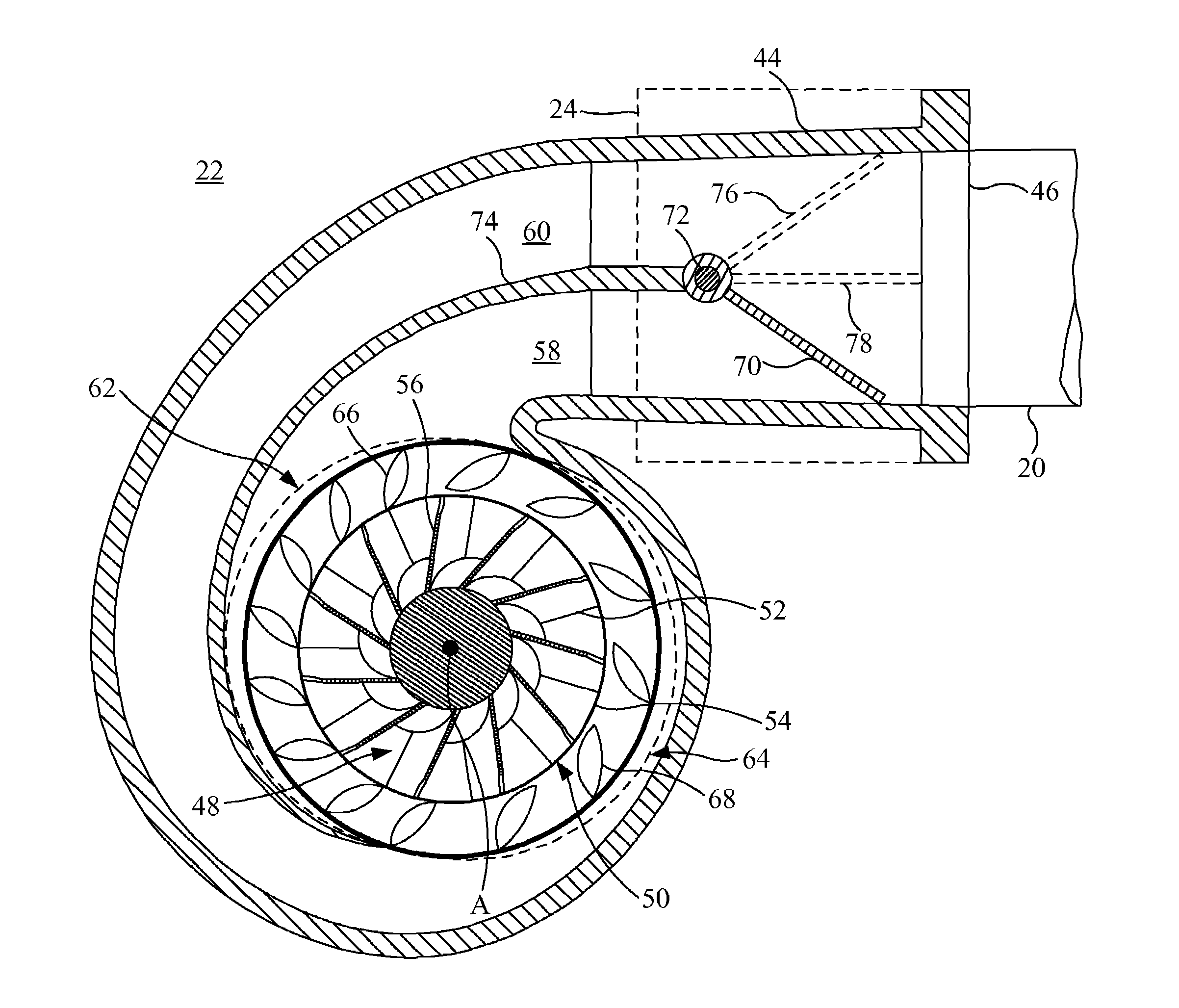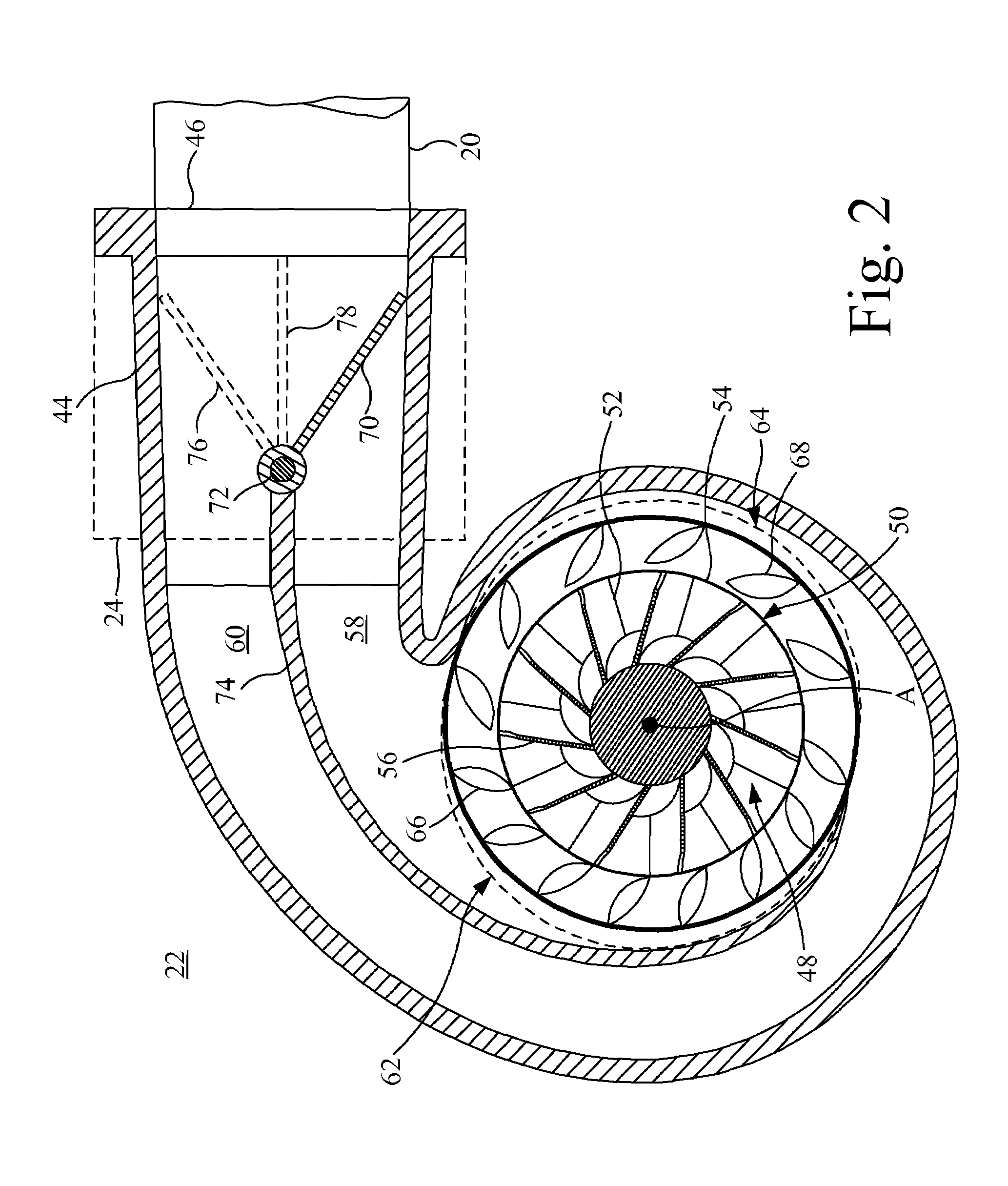Internal combustion engine system having a power turbine with a broad efficiency range
a technology of power turbines and combustion engines, applied in the direction of machines/engines, stators, liquid fuel engines, etc., can solve the problems of significant impact of efficiency drop, system reliability is questioned, and the efficiency of systems is affected
- Summary
- Abstract
- Description
- Claims
- Application Information
AI Technical Summary
Problems solved by technology
Method used
Image
Examples
Embodiment Construction
[0012]FIG. 1 shows an internal combustion engine system including an engine 10 producing a power output. Engine 10 may be provided in many different forms but, for the purposes of illustrating the invention, it is described as a reciprocating, air breathing internal combustion engine in which air is received from an inlet 12 and compressed in a cylinder or combustion chamber. Fuel is either mixed with the air prior to entry or within the combustion chamber. The resultant mixture is either ignited by an external source, such as a spark ignition, or by the heat of compression of the air, as in a diesel engine. Further combinations may be provided, such as homogenous charge compression ignition engines. It should be apparent to those skilled in the art that many different internal combustion engine types may be employed with the present invention.
[0013]The products of combustion from engine 10 are delivered to an exhaust 14 and from there to a turbine 16 of a turbocharger, generally in...
PUM
 Login to View More
Login to View More Abstract
Description
Claims
Application Information
 Login to View More
Login to View More - R&D
- Intellectual Property
- Life Sciences
- Materials
- Tech Scout
- Unparalleled Data Quality
- Higher Quality Content
- 60% Fewer Hallucinations
Browse by: Latest US Patents, China's latest patents, Technical Efficacy Thesaurus, Application Domain, Technology Topic, Popular Technical Reports.
© 2025 PatSnap. All rights reserved.Legal|Privacy policy|Modern Slavery Act Transparency Statement|Sitemap|About US| Contact US: help@patsnap.com



